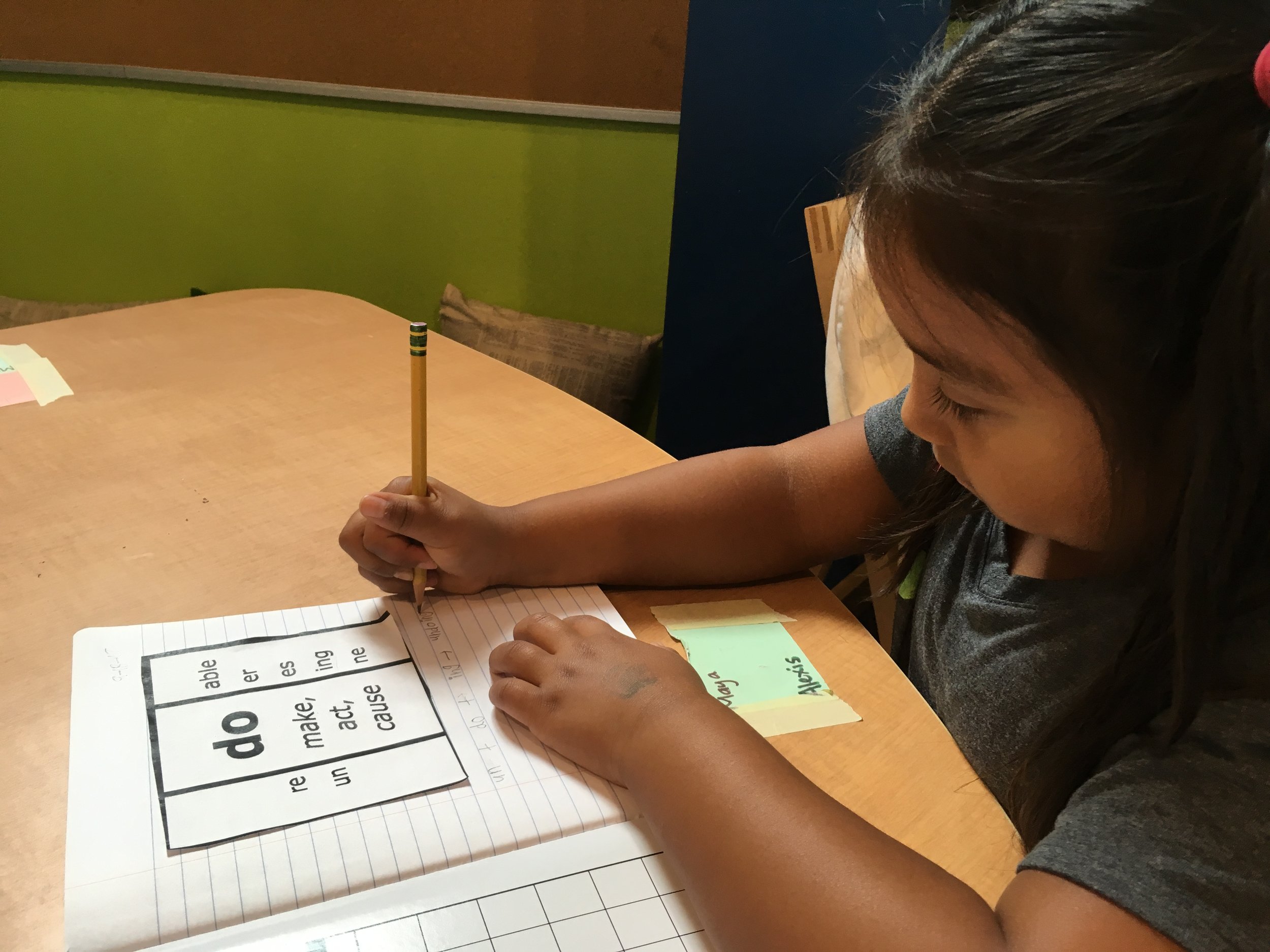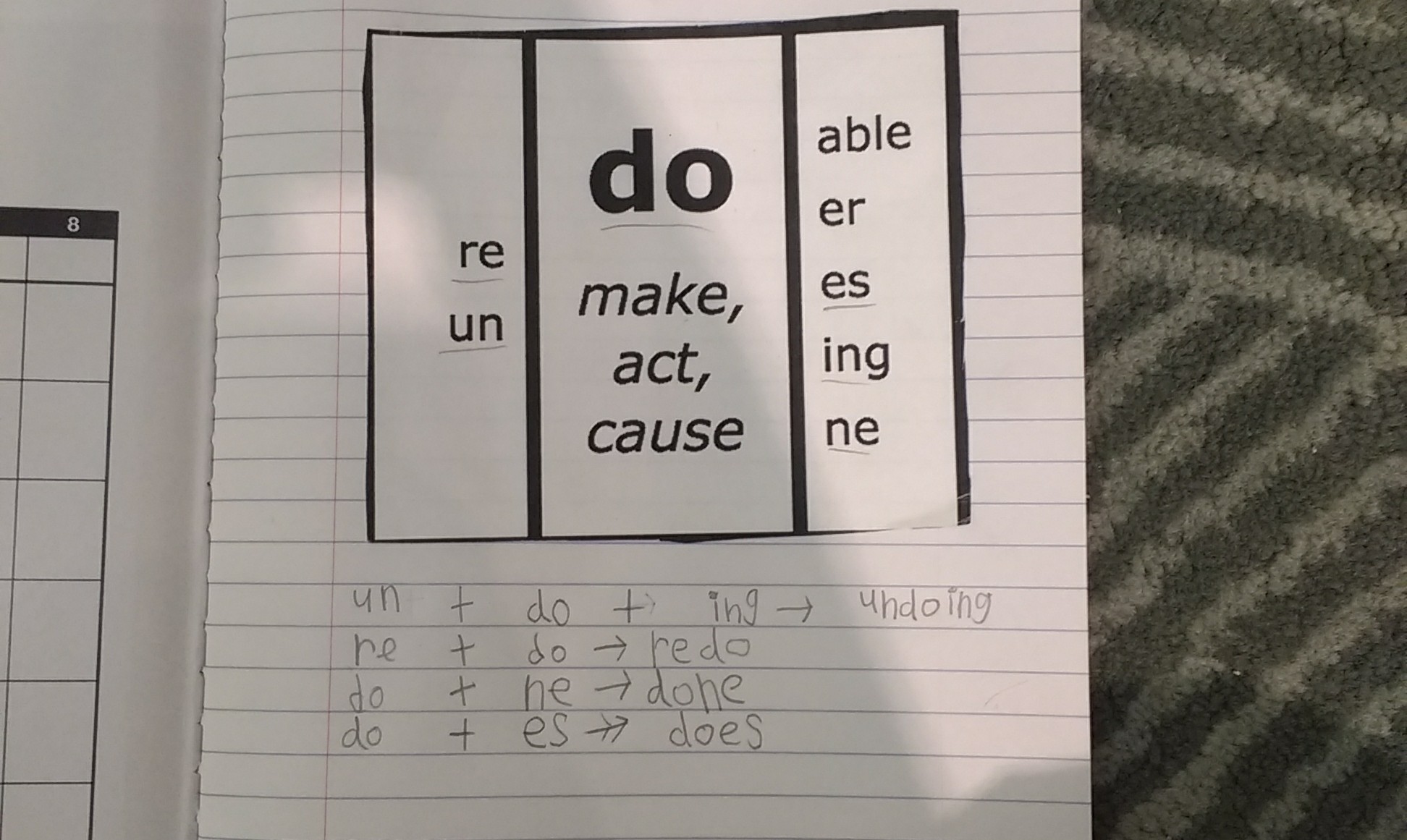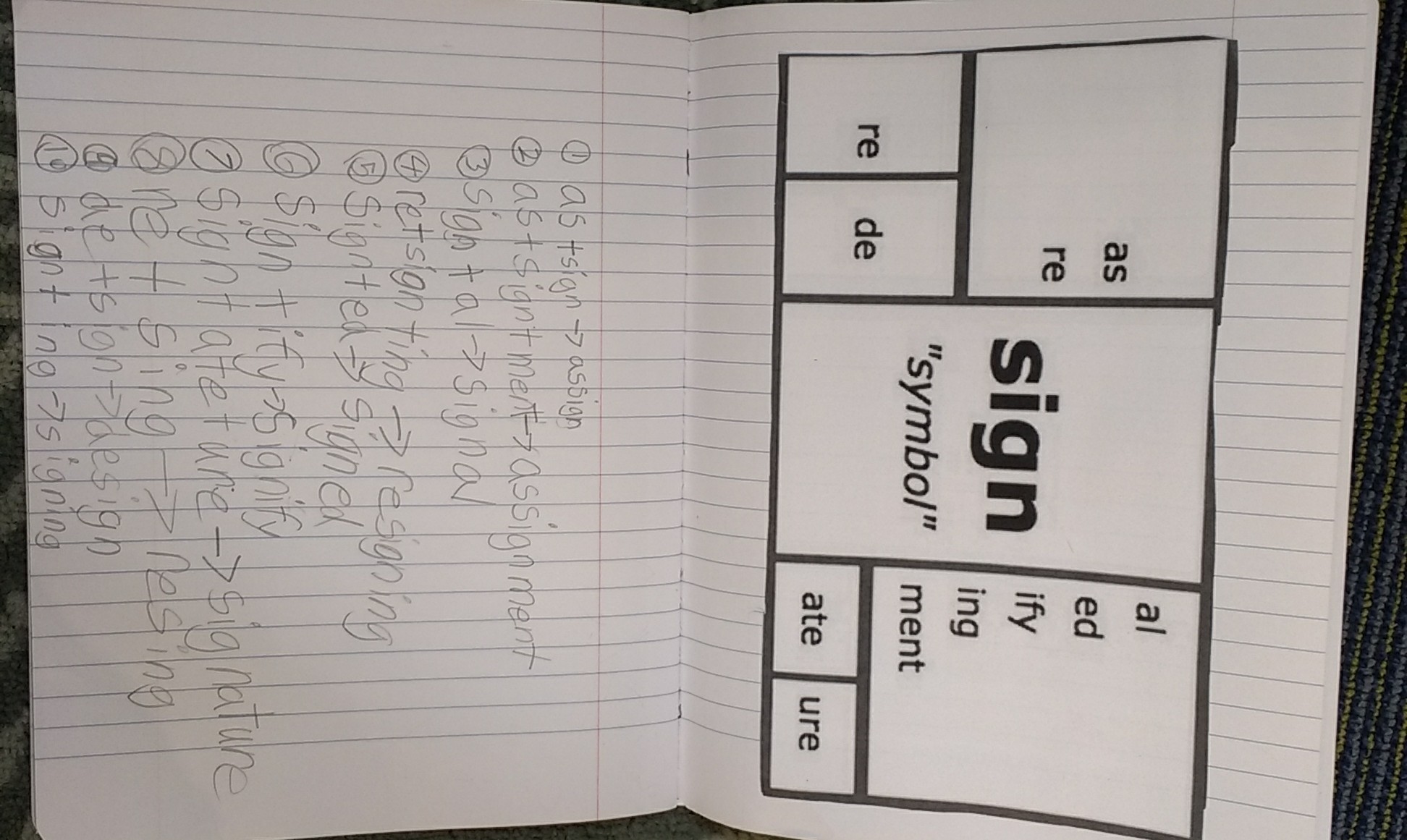An update from Charlotte Mooney, English Teacher
What’s a word you struggle to spell? (Come on adults, we all have them! Mine is sandwich.) How would understanding that word help you?
Progressive education is built on the premise that learning is an active and inquiry-based process. Understanding is better than memorization, and with this in mind we are excited to share Structured Word Inquiry with our students.
SWI is a way to understand how English works by researching a word’s meaning, relatives, history, and phonology. Every word tells a story and knowing a word’s history does more than provide us with interesting stories. It can also help us understand why a word’s seemingly crazy spelling makes sense. Since we as English teachers have been been using SWI to investigate words, we’ve discovered reasons for the h in hour, the e in nurse, and the b in doubt. We now understand why English speakers collectively chose ‘does’ over duz, and ‘vaccine’ rather than vaxine (see here for a clue). We’ve even discovered some surprising connections between the words ‘hippopotamus’ and ‘hippocampus’ and the Chinese 河马.
SWI works for linguists at all levels of experience, and last week our students began investigating words themselves.
Second grade looked at the <do> family. The discovered that the words do, done, does, and doing are all related by a common meaning, which is signified by their common spelling. Even when the pronunciation changes, the spelling stays consistent. That’s how we know to write ‘does’ instead of ‘duz’.
Third grade looked at the <sign> family. They discovered the relationships between many words, including assign, signal and signature. They noticed that even when the pronunciation of <sign> changes, the spelling and meaning remain the same. That’s why we write ‘design’ and not ‘dezine’. Later, they will notice similar patterns in words such as heal and healthy and please and pleasure. Exploring at the <sign> family also helped students to build up a bank of affixes such as as-, -ment, -ure, and re-. They will be able to use these building blocks throughout their writing, speaking and reading to understand and construct more complex words.
Once we start to see words as made up of meaningful parts, we can understand and spell a lot more. After all, it’s easier to understand orthography when you’ve already had your teeth corrected by an orthodontist, and signed your autograph!




